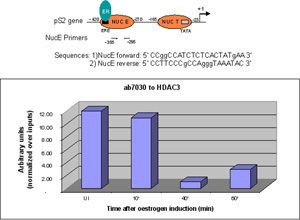Entrez 8841 | Ensembl ENSG00000171720 | |
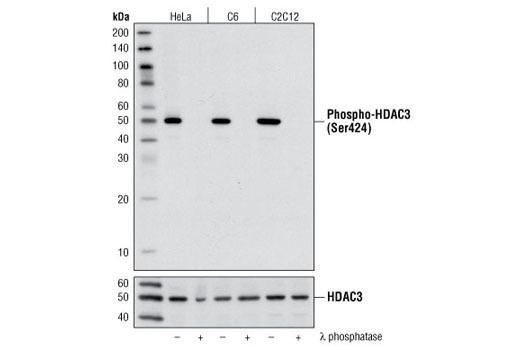 | ||
Aliases HDAC3, HD3, RPD3, RPD3-2, histone deacetylase 3 External IDs MGI: 1343091 HomoloGene: 48250 GeneCards: HDAC3 | ||
Histone deacetylase 3 is an enzyme that in humans is encoded by the HDAC3 gene.
Contents
- Gene music quartet using protein sequence of hdac3 histone deacetylase 3
- Function
- Alternative functions
- Model organisms
- Interactions
- References
Gene music quartet using protein sequence of hdac3 histone deacetylase 3
Function

Histones play a critical role in transcriptional regulation, cell cycle progression, and developmental events. Histone acetylation/deacetylation alters chromosome structure and affects transcription factor access to DNA. The protein encoded by this gene belongs to the histone deacetylase/acuc/apha family. It has histone deacetylase activity and represses transcription when tethered to a promoter. It may participate in the regulation of transcription through its binding with the zinc-finger transcription factor YY1. This protein can also down-regulate p53 function and thus modulate cell growth and apoptosis. This gene is regarded as a potential tumor suppressor gene.
This enzyme is involved in the coordination of commensal-bacteria-dependent intestinal homeostasis when expressed in intestinal epithelial cells.
Alternative functions
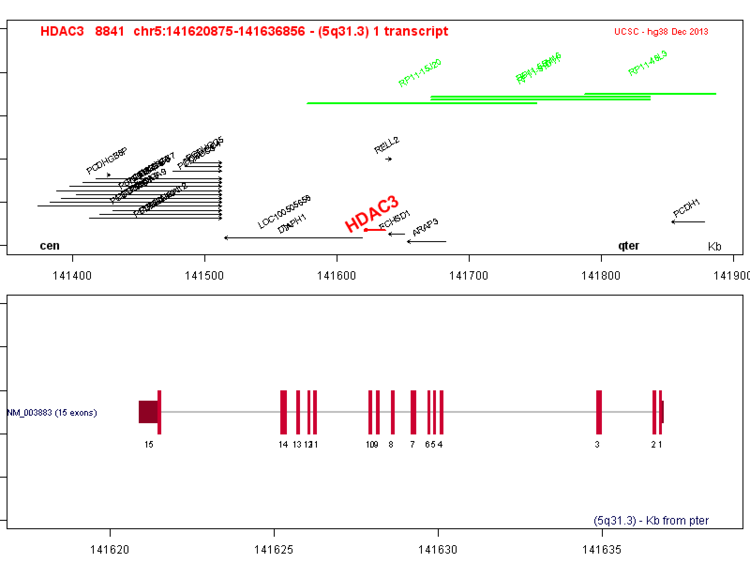
Histone deacetylases can be regulated by endogenous factors, dietary components, synthetic inhibitors and bacteria-derived signals. Studies in mice with a specific deletion of HDAC3 in intestinal epithelial cells (IECs) show a deregulated IEC’s gene expression. In these deletion-mutant mice, loss of Paneth cells, impaired IEC function and alterations in intestinal composition of commensal bacteria were observed. These negative effects were not observed in germ-free mice, indicating that the effects of the deletion are only seen in the presence of intestinal microbial colonization. But the negative effects of HDAC3 deletion are not due to the presence of an altered microbiota because normal germ-free mice colonized with the altered microbiota did not show the negative effects seen in deletion mutants.
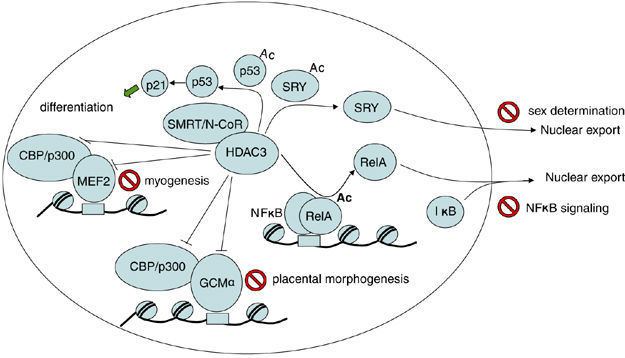
Although the precise mechanism and the specific signals are not known it is clear that HDAC3 interacts with derived signals of commensal bacteria of the gut microbiota. These interactions are responsible of calibrating epithelial cells responses necessary to establish a normal relationship between the host and the commensal as well as to maintain intestinal homeostasis.
Model organisms
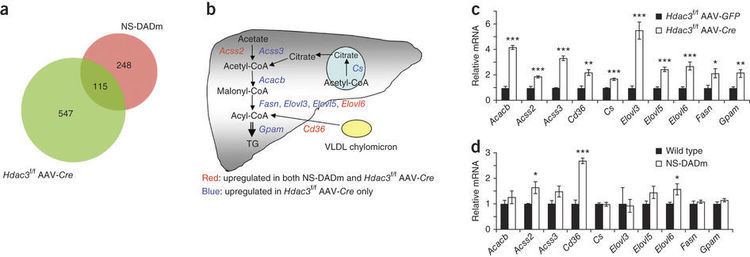
Model organisms have been used in the study of HDAC3 function. A conditional knockout mouse line, called Hdac3tm1a(EUCOMM)Wtsi was generated as part of the International Knockout Mouse Consortium program, a high-throughput mutagenesis project to generate and distribute animal models of disease to interested scientists.
Male and female animals underwent a standardized phenotypic screen to determine the effects of deletion.
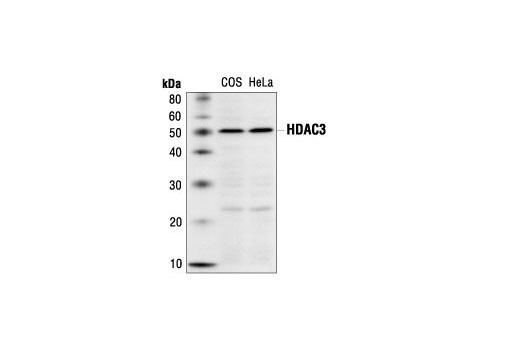
Twenty six tests were carried out on mutant mice and two significant abnormalities were observed. No homozygous mutant embryos were identified during gestation, and in a separate study none survived until weaning. The remaining tests were carried out on heterozygous mutant adult mice; no significant abnormalities were observed in these animals.
Interactions
HDAC3 has been shown to interact with:
